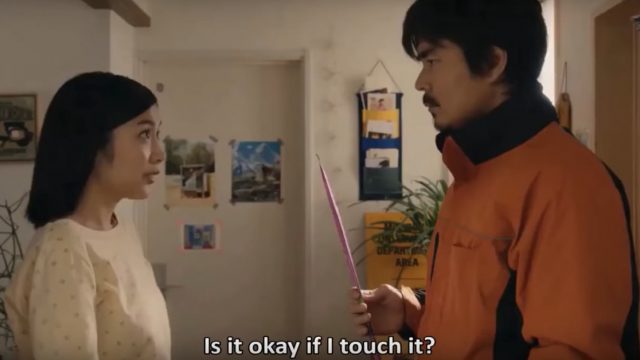When I was a kid, there was an instant coffee brand that made a series of commercials inside the relationship of a couple. It was a serialized story, and the important distinction was that everyone involved drank a lot of Taster’s Choice. (Or Gold Blend, in the UK.) He went on to play Giles on Buffy the Vampire Slayer; she went on to not terribly much. But I remember being genuinely excited when new commercials featuring the pair debuted and we got to follow the next step in their relationship. It’s a joy that I can’t explain, unless you have seen the Japanese “Long Long Man” series of commercials.
Serialized storytelling is not the exclusive outlet of advertising, of course. It predates the very concept. It’s odd, though, that we as a culture have been so enthusiastic about following the lives of people we know were created to sell us things. We’re not talking soap operas here, though of course soap operas have to come up when we’re having the conversation. We are talking literally “here is thirty seconds of characters whose entire lives revolve around this product.” Maybe they’re done well, but why are we onboard with it regardless of quality?
I mean, “Long Long Man” is art. Insane art, but art. I’m not sure it makes me want to try the product in question, but I have watched and rewatched the commercials on YouTube for years, and if I can get the stuff around here at all, it’s either in the Japanese stuff store in my local mall or World Market. I still have more brand awareness of the stuff than I do about actual foodstuffs in my own grocery store. I definitely won’t drink Taster’s Choice—I don’t like coffee—but I have remembered those commercials since before some of our contributors have been alive.
The longest-running advertising campaign in US history is for Jack in the Box. While he is not serialized in the strictest sense, he’s an advertising mascot of note, and the chain has been using the same campaign since 1994.. And we know about, for example, his wife and kid and his parents. Similarly, other mascots have had short campaigns wherein we followed a plot with them. And as a child, I was always passionate about the injustice of “Trix are for kids” and wanted the Trix Rabbit to just get the cereal—one my mother would never buy for us, not that I really wanted it.
I think advertising companies are drawing on a human heritage of storytelling. I also think that we may care about some of these figures half against our will. Do I like that I can quote a Jack in the Box commercial from the late ’90s? Eh. My best friend and I will occasionally reference another one to the point that it’s an in-joke of ours. It is what it is. At least these long-form narrative commercials show some originality, I guess.
Now, it’s time for the commercial part of my article where I ask you to support my Patreon or Ko-fi!


